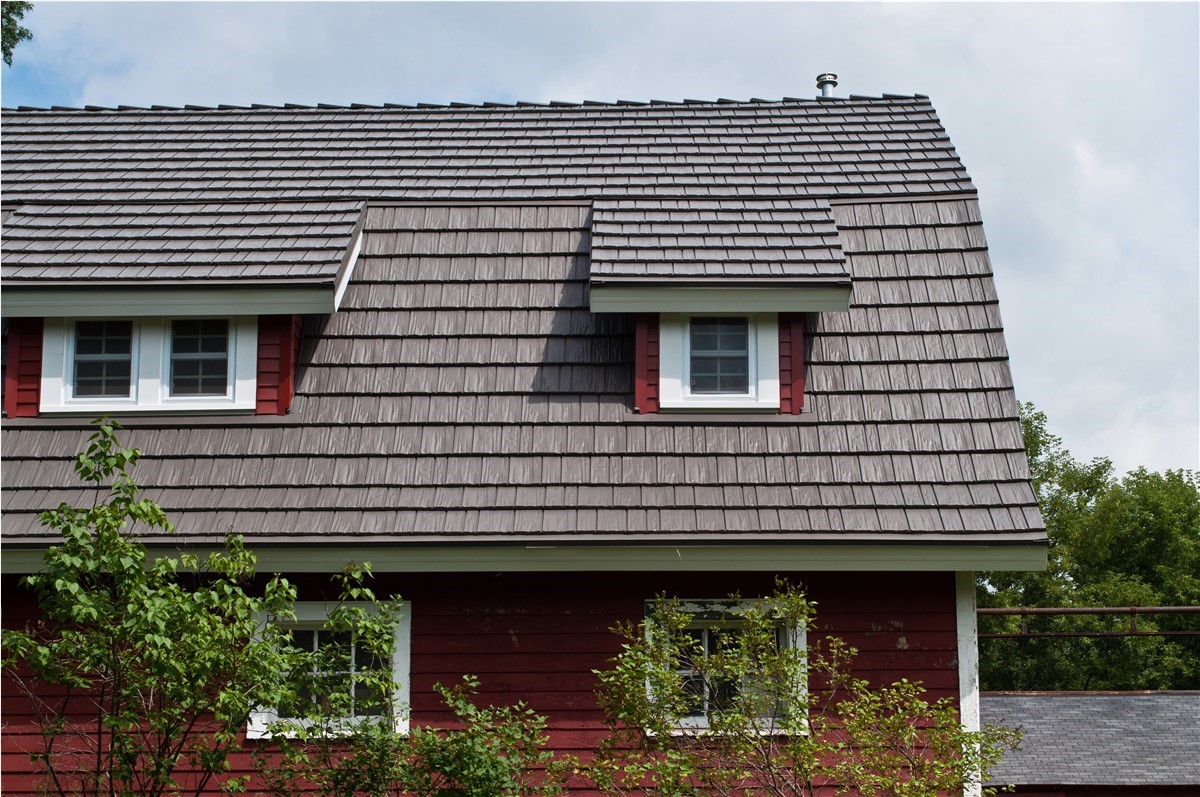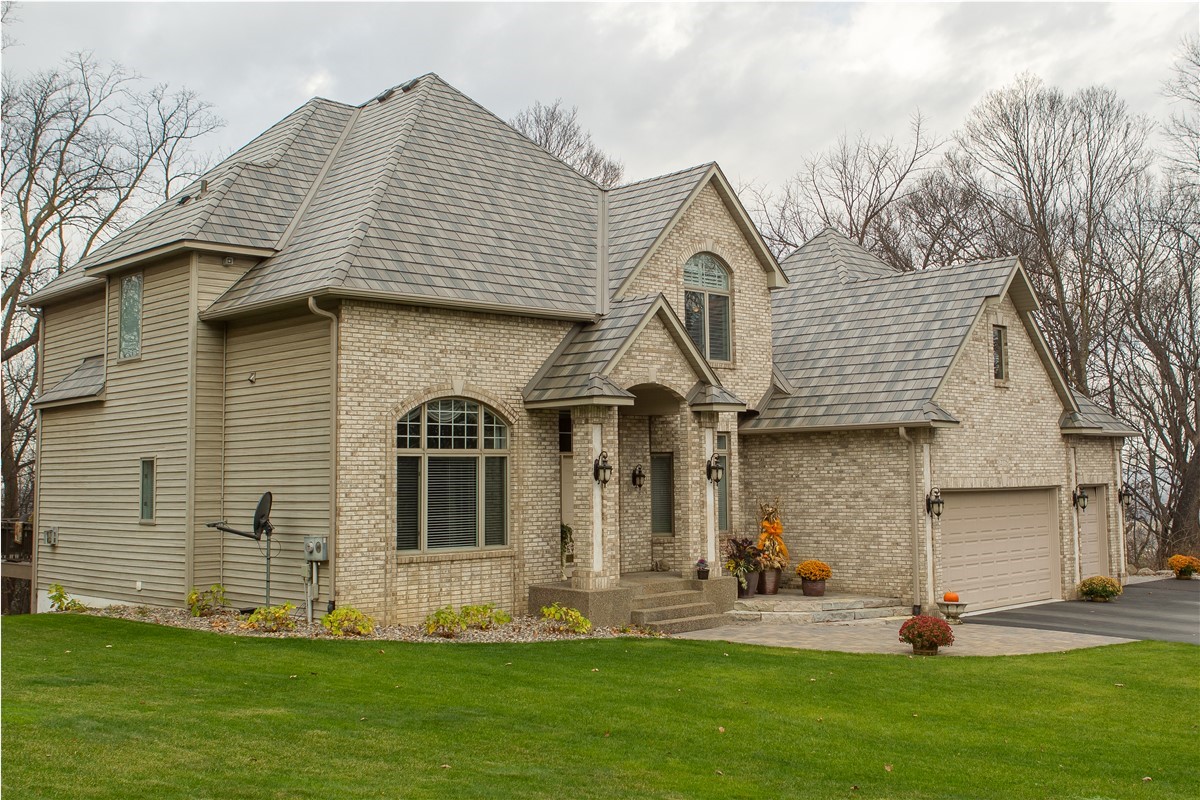No matter what type of roofing materials you want to use to cover the old roof, you need to consider that the surface price of the materials is only going to be a fraction of the total costs that you spend on the materials. This is because there are layers, features and additional costs and areas that also need to be covered to provide a properly ventilated, waterproof, strong holding roof system.
Materials Beyond the Surface of Your Roof Can Include: Sheathing - This is the sheet of plywood that covers the trusses and is the base of your roof. If your old roof had exposure to water for a period of time, then this will need to be replaced. Water damage can cause rot, which leads to problems inside the home. Expect to pay around $15-20 per sheet (4' x 8') that is needed. Roofing Underlayment - Underlayment goes on top of the sheathing and under the roofing material. This part of the roof is going to keep it waterproof. Without it, the roof can take some pretty serious damage from the water that falls from the sky. The underlayment protects the sheathing in case the top layer receives any damage. It is like a backup plan. Underlayment comes in many different sizes, so it is able to fit the shape and size of the roof it is going on. Generally, it can cost anywhere from $20 for 4 roofing squares of black felt, but it is also something that is not as durable. If you’re searching for something a bit more durable, a roll of synthetic felt can go for around $90. Winter Underlayment - Many roofers refer to this material as 'ice and water,' but this is actually a trade name for just one brand. These materials protect the roof from the snow and ice in areas where it is more likely to build up and cause issues. It can be a great piece to have in the cold Minnesota winters. At around $50-$80 per roll, it is a great investment for most homeowners in the Minneapolis area. Drip Edge - This controls the water runoff that happens at the edge of the roof. It keeps water from running down behind the gutters. It is durable and made from sheet metal. The drip edge on a roof can cost anywhere between $3 to $6 for 10 feet sections. It might not sound like much, but when it comes to the amount of space you have to cover, it can become quite expensive. On the other hand, the water damage a home can suffer makes it well worth the expense. Nails - Roofing nails are a bit more secure compared to staples. They can cost around $42 for 2,000 nails to be placed into the underlayment. It can take as many as 500 nails per square to lay the underlayment. You want to make sure that you’re not overdoing the costs, either. Ask your roofing company whether they will be using nails or staples. Now that we've handled the basics of roofing, it's time to discuss what we recommend as the best roofing solution for Minnesota homeowners: metal roofing.
Sheathing - This is the sheet of plywood that covers the trusses and is the base of your roof. If your old roof had exposure to water for a period of time, then this will need to be replaced. Water damage can cause rot, which leads to problems inside the home. Expect to pay around $15-20 per sheet (4' x 8') that is needed. Roofing Underlayment - Underlayment goes on top of the sheathing and under the roofing material. This part of the roof is going to keep it waterproof. Without it, the roof can take some pretty serious damage from the water that falls from the sky. The underlayment protects the sheathing in case the top layer receives any damage. It is like a backup plan. Underlayment comes in many different sizes, so it is able to fit the shape and size of the roof it is going on. Generally, it can cost anywhere from $20 for 4 roofing squares of black felt, but it is also something that is not as durable. If you’re searching for something a bit more durable, a roll of synthetic felt can go for around $90. Winter Underlayment - Many roofers refer to this material as 'ice and water,' but this is actually a trade name for just one brand. These materials protect the roof from the snow and ice in areas where it is more likely to build up and cause issues. It can be a great piece to have in the cold Minnesota winters. At around $50-$80 per roll, it is a great investment for most homeowners in the Minneapolis area. Drip Edge - This controls the water runoff that happens at the edge of the roof. It keeps water from running down behind the gutters. It is durable and made from sheet metal. The drip edge on a roof can cost anywhere between $3 to $6 for 10 feet sections. It might not sound like much, but when it comes to the amount of space you have to cover, it can become quite expensive. On the other hand, the water damage a home can suffer makes it well worth the expense. Nails - Roofing nails are a bit more secure compared to staples. They can cost around $42 for 2,000 nails to be placed into the underlayment. It can take as many as 500 nails per square to lay the underlayment. You want to make sure that you’re not overdoing the costs, either. Ask your roofing company whether they will be using nails or staples. Now that we've handled the basics of roofing, it's time to discuss what we recommend as the best roofing solution for Minnesota homeowners: metal roofing. So, what exactly is the difference between metal and asphalt shingles on a roof?
Watch for our next post to find out even more about the costs associated with metal roofing on your home. We can answer any questions you have regarding metal roofing. It's our specialty.
Quarve Contracting, Inc. is a licensed Minnesota roofing contractor, and we install a variety of roofing materials including steel.
Subscribe to Quarve Contracting's Blog





Comments